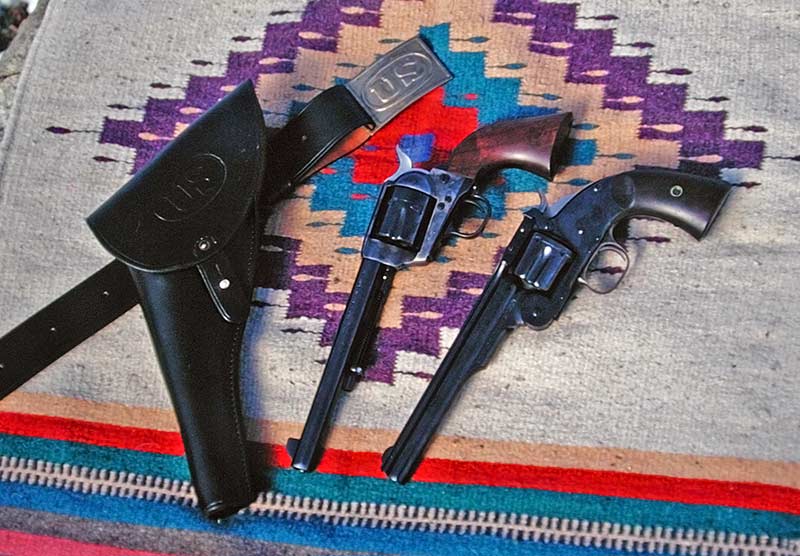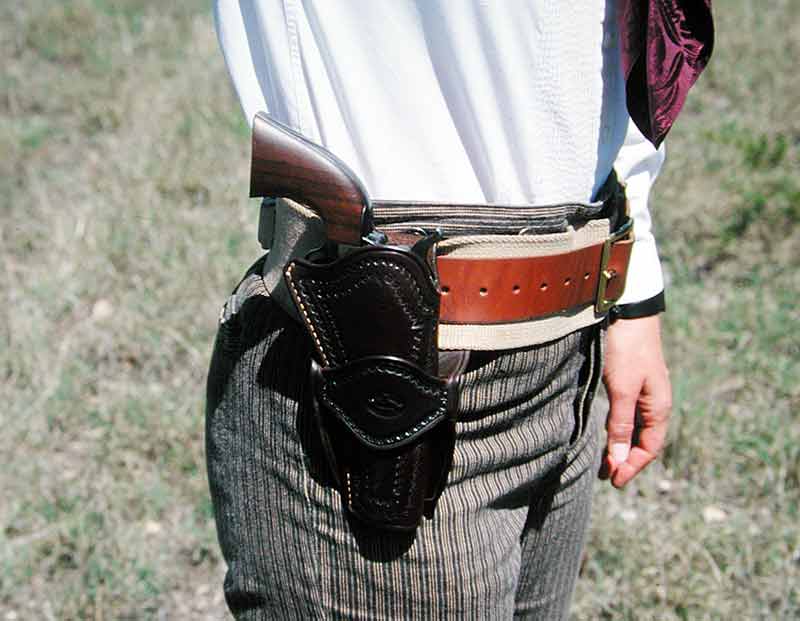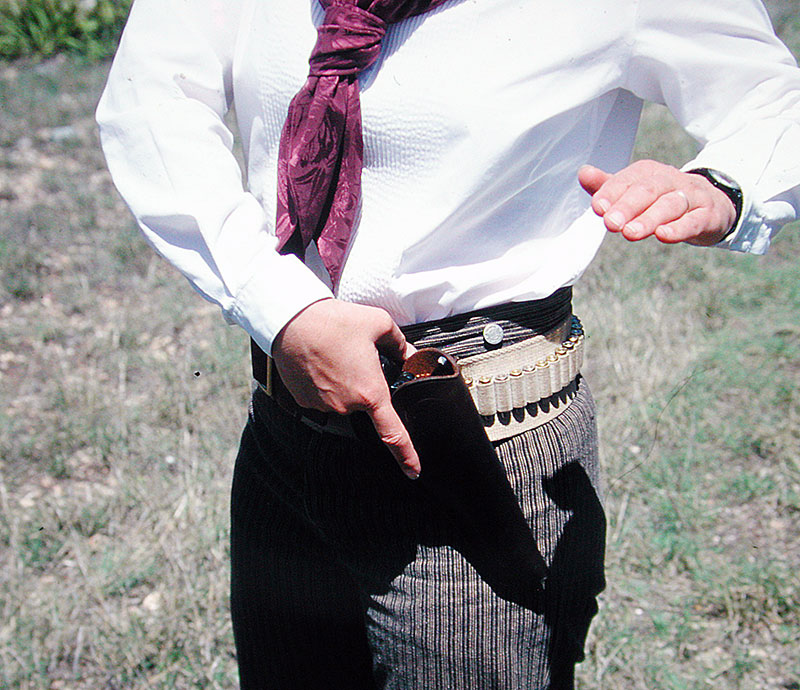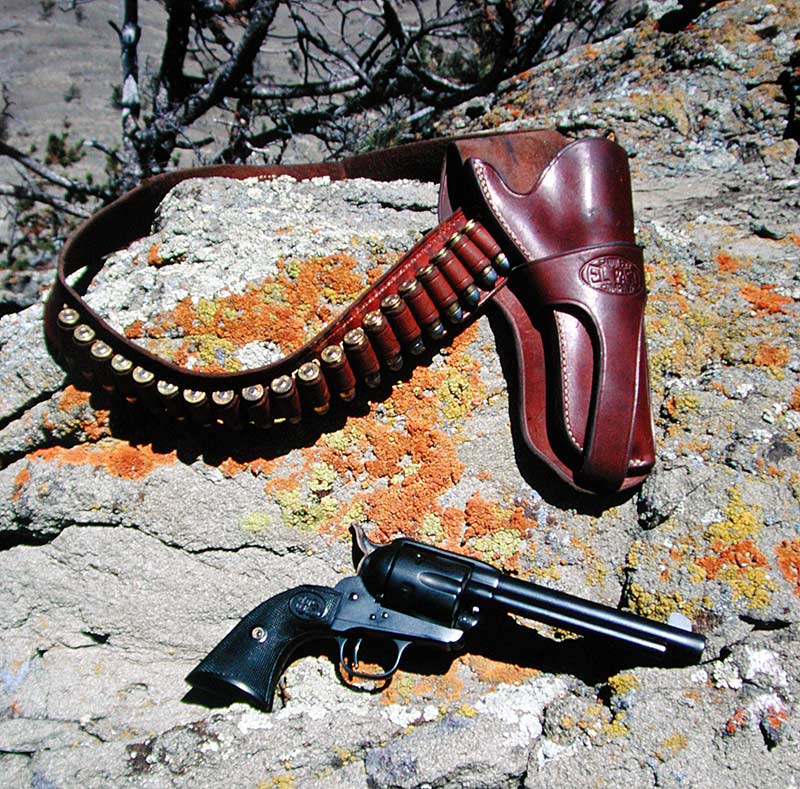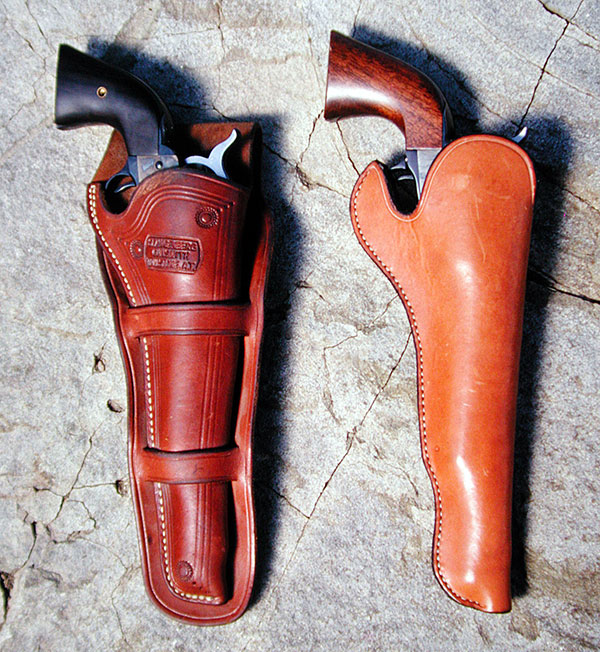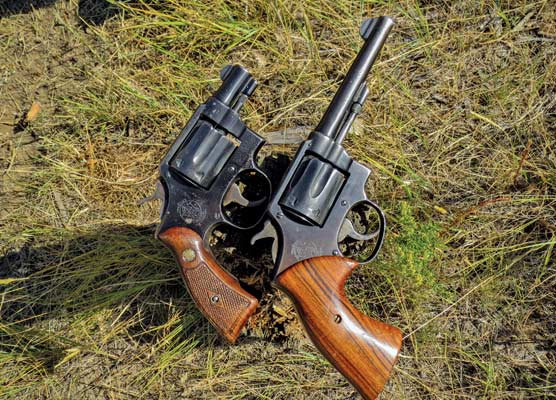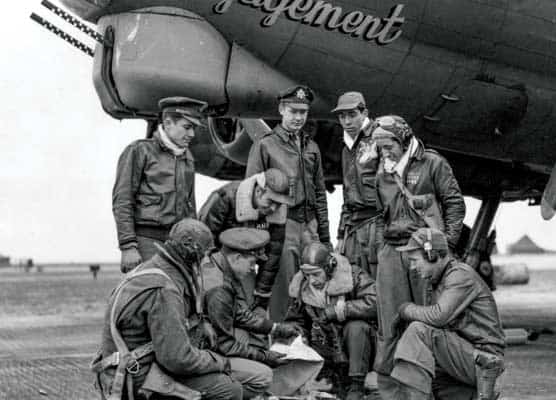Colt Single Action Leather
Part 11 of 12 Part Genesis of the Colt Single Action
For me one of the most enjoyable adjuncts to Colt Single Action Revolvers of all types is their leather gear. It comes in a bewildering variety of styles and purposes. It can also serve as the “canvas” for exquisite artwork.
Let’s look at some styles first, or perhaps more appropriately, let’s understand the terms for those styles. There are: the military full-flap holster, Slim Jim, Mexican Loop, Mexican Loop with Cheyenne swell and of course, the Mexican Loop with Texas Jockstrap — seriously. Then there’s the one made famous by Hollywood, the Buscadero rig. Also there are names to link with how one gets the six-shooter out of the holster. There is straight draw, reverse draw and cross draw. Other facets are; safety strap or thong, open end or plugged, lined or unlined. Then there are gun belts, cap pouches, cartridge loops and of course the famous money belt.
Now let’s look at details. The earliest holsters for Colt single action revolvers came from the U.S. Army. When they adopted Colt cap & ball revolvers for their Dragoons (later to become cavalrymen) they were looking for holsters to protect the weapons from the elements. Quick draw as popularized in dime novels and later in cinema was never a factor. Therefore, the army came up with the flap holster. It is simply a leather pouch with a full flap covering the top of the revolver. It keeps the handgun in and (hopefully) the weather out.
As Colt revolvers became standard items of attire in some places, mostly beginning with the California gold rush of the 1850s, civilians began to need holsters too. All that was done initially to make civilian holsters was take the basic military full-flap style and cut the flap off. Because most revolvers at this time had long barrels this gave the holster a long, slender look. Hence they became named Slim Jim.
By the late 1870s and early 1880s another style of holster was in widespread use in the Old West. This one was called the Mexican Loop. It consists of a large single piece of leather cut so the holster pouch itself slips back through one or more slits cut in the black flap. This results in a slot through which the gun belt slides. Mexican Loop holsters can be found with one, two, or even three slits or loops. A rather attractive variation in appearance — if not in name — is the Mexican loop with Texas Jockstrap. In this variation there is another loop going vertically around the end of the holster.
One fault of the Mexican Loop holster design is the leather pouch tends to grab to the revolver when it is drawn. Then the pouch will pull right through the back flap’s slits. This problem led to the Cheyenne swell. That is nothing more than a bulge in the seam of the pouch that sets between two of the back flap’s loops. That little alteration locks the holster pouch tight so the handgun can be drawn. A stitch attaching the holster pouch to the back flap works as well.
Buscadero rigs are those seen in western movies and old TV western programs. They are holster and belt combinations. The belt is contoured so it drops low on the side where the handgun will be worn. Then the belt has a loop through which the holster hangs to drop it even lower: so low in fact the holster needs to be tied to the wearer’s thigh to keep it from swinging all over the place. It’s a most impractical way to actually carry a revolver, more suited to Hollywood “gunfighters” or the quick-draw crowd.
Drawing
Cross draw is when the gun handler reaches across himself to pull the revolver. It’s fairly practical if the shooter is reasonably slender in build. The reverse draw arose from the manner in which cavalrymen were ordered to carry handguns. That is, on the right side with gun butt forward. To get their weapons out the cavalryman had to twist his hand to grasp the gun butt. This isn’t the greatest idea anyone ever came up with because it is nigh on impossible to get the handgun clear of leather without sweeping its muzzle across your body.
Lastly, there’s the ordinary straight draw where the handgun sets straight up and down in the holster. To get it out and into action you pull the gun straight up and when the muzzle clears leather it’s then shoved forward. That’s rather safe as long as the shooter keeps their finger off the trigger until actually shooting.
Most authentic Old West holsters did not have safety straps. That’s pretty much a 20th century innovation. However, they did have hammer thongs. That’s a twist of leather much like a bootlace pushed through two holes punched in the holster near the revolver’s hammer. The resulting loop can be pushed over the revolver’s hammer spur in order to keep the handgun in the holster. I became a devotee of the hammer thong on Old West style holsters over 30 years back when riding a horse through dense brush. My holster only relied on tightness to keep my Colt SAA in place and so a bit of brush caught the hammer spur and pulled it to half-cock. Thereafter I never rode a horse when wearing a holstered sixgun that did not have the hammer spur held in place with a thong or strap.
Plugs
In the beginning I mentioned holsters with open ends or ones with plugs. Basically any basic style of single action holster can be either way. The idea of the open end is to allow debris to fall on through. The idea of the plug is to keep the handgun muzzle clean if one is sitting down. Which is best? I’d have to say it’s a personal choice.
Now I want to give a word of opinion about cartridge belts. They are very photogenic. They are much less practical in real life. One reason is the chemicals used to tan leather will cause cartridge brass to form verdigris, a green sort of scum. Also they get heavy if there are many cartridge loops on them. If those loops are tight enough to secure your extra ammo supply the rounds are difficult to pull out. If the loops are loose enough the rounds come free easily, then they are apt to be spread all over the landscape. And here’s one last opinion about gunbelts, whether they have cartridge loops or not. That is they should be made of soft pliable leather. If made of stiff leather they are more like hula-hoops, or in other words they won’t grab the body and stay in place.
Artistic
In the beginning I said holsters can be the “canvas” for works of art. That is when holsters are carved or decorated. Such leather work when done by an expert is beautiful. I like them floral carved and often with my initials cut into them.
When it comes to serious leather gear in which to carry 1911s concealed, I have only a couple of holsters. For my Colt Single Actions — I have dozens!
Click Here To View List And Links To All Colt Series Articles

